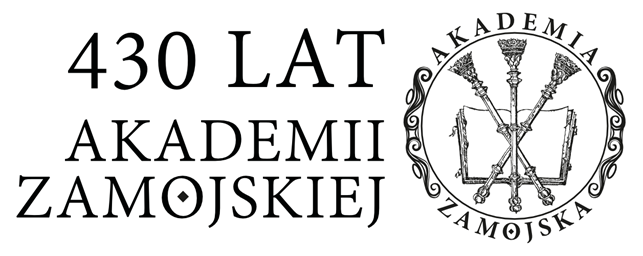Barca F. (2009): An Agenda for a Reformed Cohesion Policy. A Place-Based Approach to Meeting European Union Challenges and Expectations. Independent Report prepared at the request of Danuta Hübner, Commissioner for Regional Policy.
Document Accompanying the Commission Communication on Regional Policy Contributing to Smart Growth in Europe 2020. (2010), Brussels, European Commission, SEC (2010) 1183, Commission Staff Working Dokument, COM (2010) 553 final.
Erken H., van Es F. (2007): Disentangling the R+D shortfall of the EU vis-a-vis the US. „Jena Economic Research Papers” (107).
Florida R.L. (2004): The Rise of the Creative Class. And How It’s Transforming Work, Leisure, Community and Everyday Life. New York, Basic Books.
Florida R.L. (2005): The Flight of the Creative Class. The New Global Competition for Talent. New York, HarperBusiness.
Foray D., David P.A., Hall B. (2009): Smart Specialisation — The Concept. „Knowledge for Growth” Expert Group.
Foray D., Goddard J., Beldarrain X.G., Landabaso M., McCann P., Morgan K., Nauwelaers C., Ortega-Argilés R. (2012): Guide to Research and Innovation Strategies for Smart Specialisation (RIS 3 ). [brak miejsca wydania], [brak wydawcy], [dostęp: 2013.09.10], [@:] http://s3platform.jrc.ec.europa.eu/en/c/document_library/get_file?uuid=e50397e3-f2b1–4086–8608–7b86e69e8553, The responsibility for the accuracy of the analysis and for the judgements expressed lies with the authors alone. This document does not constitute the policy positions of the EU Commission.
Gertler M.S., Florida R., Gates G., Vinodrai T. (2002): Competing on Creativity: Placing Ontario’s Cities in North American Context. [brak miejsca wydania], [brak nazwy wydawcy], [dostęp 2013.09.10], [@:] http://www.urban.org/UploadedPDF/410889_Competing_on_Creativity.pdf, A report prepared for the Ontario Ministry of Enterprise, Opportunity and Innovation and the Institute for Competitiveness and Prosperity.
Guetzkow J. (2002): How the Arts Impact Communities: An Introduction to the Literature on Arts Impact Studies. Center for Arts and Cultural Policy Studies, [dostęp: 2013.09.10], [@:] http://www.princeton.edu/~artspol/workpap/WP20%20-%20Guetzkow.pdf.
Kreidler J. (1996): Leverage Lost, the Nonprofit Arts in the Post-Ford-Era. „Journal of Arts Management Law and Society”, nr 26 (2), s. 79–100.
DOI: https://doi.org/10.1080/10632921.1996.9942956
Markusen A., King D. (2003): The Artistic Dividend: the Hidden Contributions of the Arts to Regional Development. Minneapolis, University of Minnesota.
Markusen A., Schrock G., Cameron M. (2004): The Artistic Dividend Revisited. Minneapolis, University of Minnesota.
Mathieu A., Van Pottelsberghe de la Potterie B. (2008): A Note on the Drivers of R&D Intensity. „CEB Working Paper”, nr 08 (002).
McCann P., Ortega-Argilés R. (2011): Smart Specialisation, Regional Growth and Applications to EU Cohesion Policy. Groningen, University of Groningen, [@:] https://community.oecd.org/docs/DOC-35950.
Regional Policy Contributing to Smart Growth in Europe 2020. (2010), Brussels, Erupean Commission, COM (2010) 553 final, Communication from the Commission to the European Parliament, the Council, the European Economic and Social Committee and the Committee of the Regions, SEC (2010) 1183.
Regional Policy Contributing to Sustainable Growth in Europe. (2011): Brussels, European Commission, Directorate-General for Regional Policy, [dostęp: 2012.12.03], [@:] http://ec.europa.eu/regional_policy/information/pdf/brochures/rfec/2011_sustainable_growth_en.pdf.
Stern M.J., Seifert S.C. (2007): Culture and Urban Revitalization: A Harvest Document. Social Impact of the Arts Project, [dostęp: 2013.09.10], [@] http://www.sp2.upenn.edu/siap/docs/cultural_and_community_revitalization/culture_and_urban_revitalization_a_harvest_document.pdf.
Stiroh K.J. (2002): Information Technology and the US Productivity Revival. What Do the Industry Data Say? „American Economic Review”, nr 92 (5), s. 1559–1576.
DOI: https://doi.org/10.1257/000282802762024638
van Ark B., O’Mahony M., Timmer M.P. (2008): The Productivity Gap Between Europe and the United States. Trends and Causes. „Journal of Economic Perspectives”, nr 22 (1), s. 25–44.
DOI: https://doi.org/10.1257/jep.22.1.25



 English
English
 Język Polski
Język Polski




